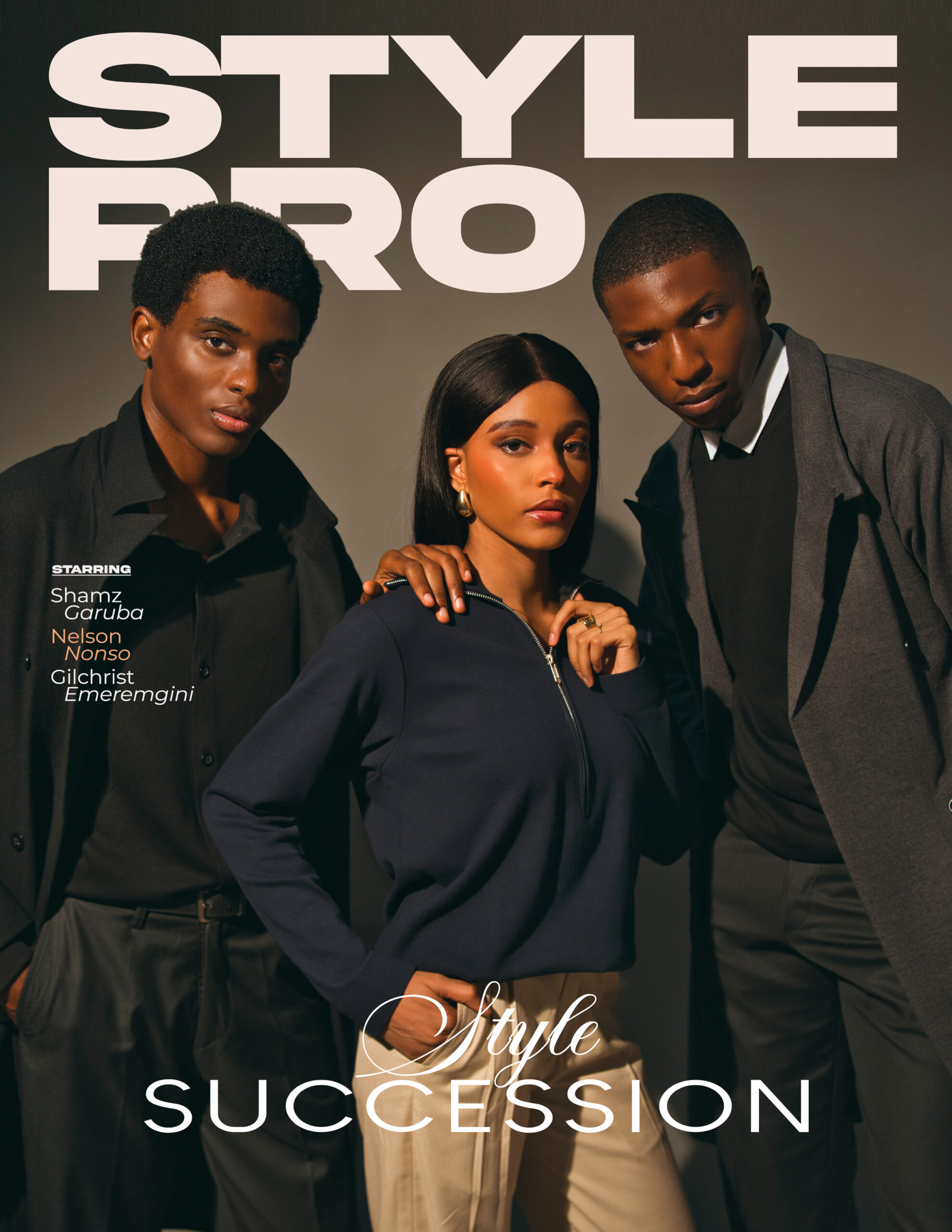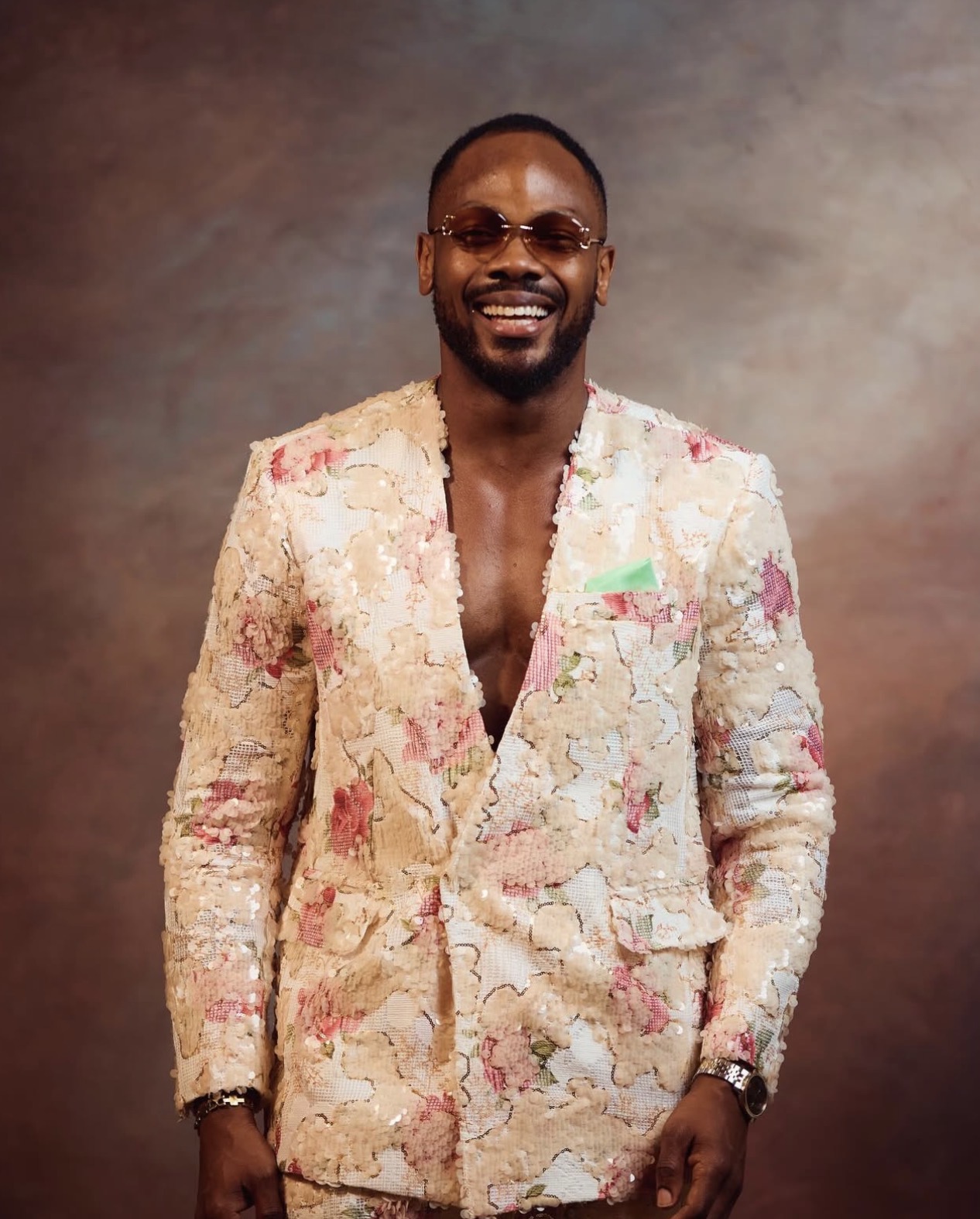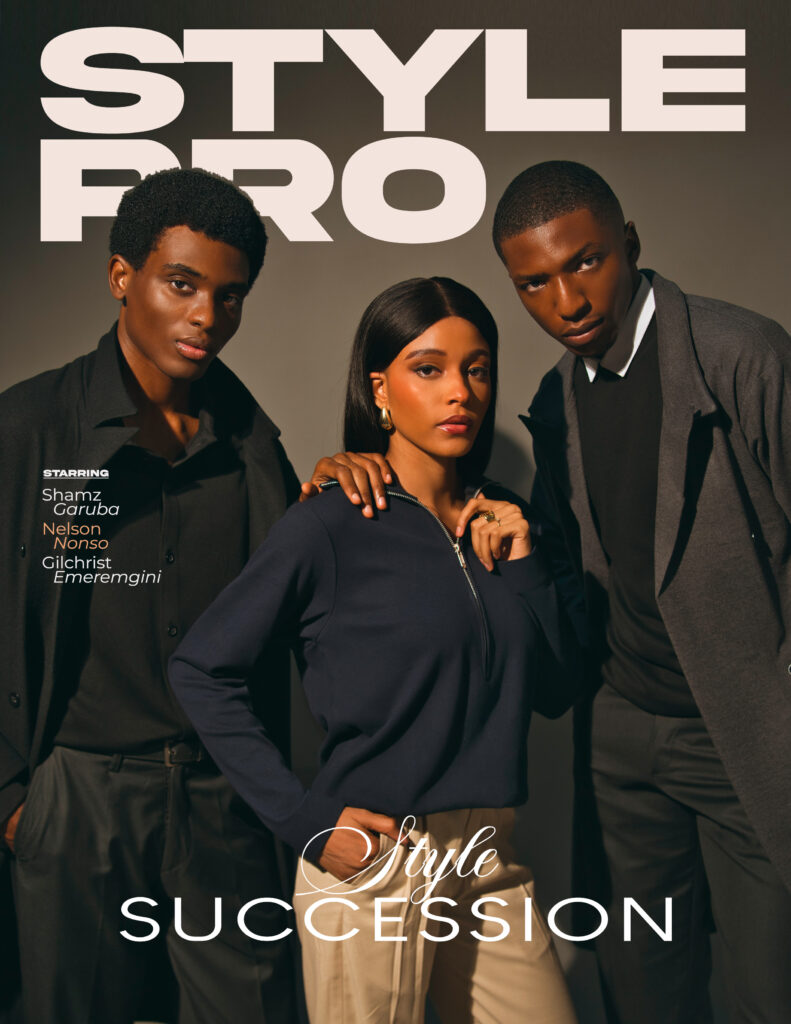
The room doesn’t fall silent when they walk in,it sharpens.
Gilchrist Emeremgini’s stillness feels deliberate, like a man who understands the weight of presence. Nonso Nelson radiates an energy that makes you notice her before you even clock the clothes. Shamz Garuba carries an ease that refuses to be confined: model, actor, storyteller, shapeshifter.
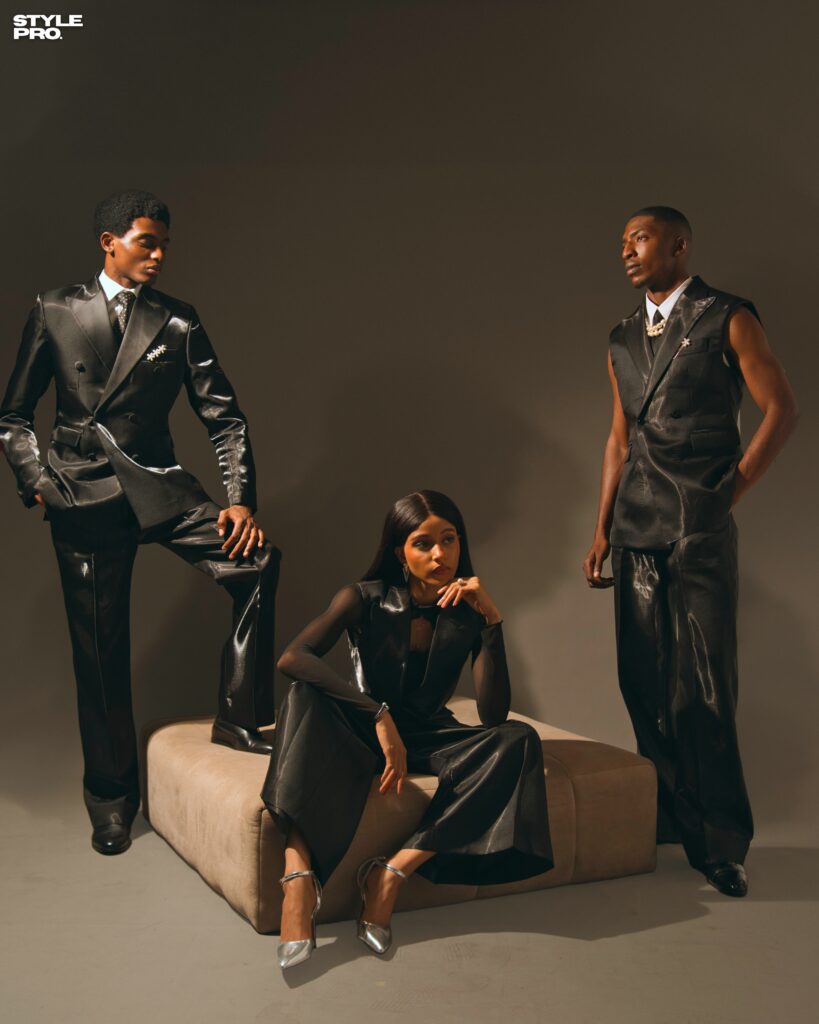
They arrive without fanfare, but together, they represent something larger than themselves-the changing of guards in a creative landscape where identity, artistry, and ambition are no longer background noise. They are the story.
This is style succession: not about who inherits boardrooms or empires, but about who takes up the cultural throne of fashion and influence in Africa. It is about legacy, presence, and power; the kind not measured in stock prices but in memory. Who gets remembered? Who sets the tone? Who defines what style looks like for a generation that refuses to be boxed in?
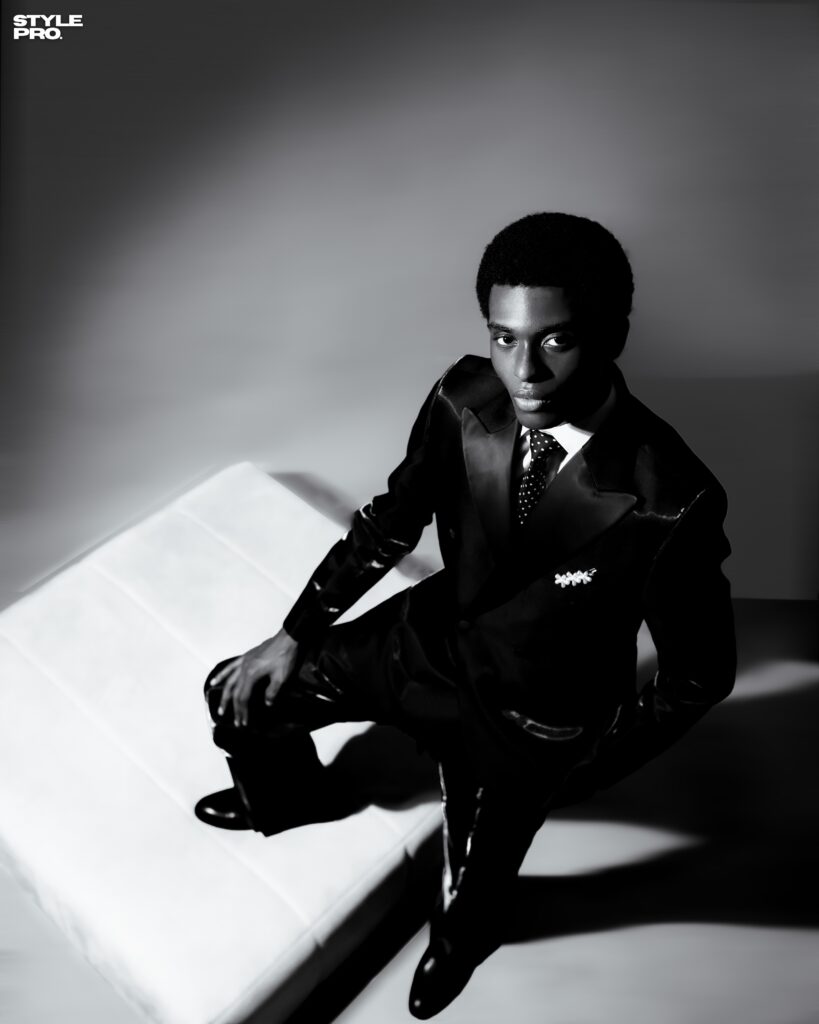
THE POLITICS OF PRESENCE
“Silence gives space for presence,” Gilchrist says, almost in passing. It sounds simple, but it’s a philosophy. He doesn’t over-post, doesn’t chase noise, doesn’t perform for validation. Instead, his power is in stillness. On the runway, he is at home. On stage, he calls it war; intimate, terrifying, alive. That paradox, the calm and the chaos, makes him magnetic.
Presence is political. In an industry crowded with fast moments and faster scrolls, holding attention without saying much is a rare skill. Gilchrist embodies that. He doesn’t flood feeds, but when you see him, you pause.

Nonso sees it differently. For her, presence isn’t silence, it’s energy. “I want people to feel power and undeniable confidence before they notice the clothes,” she says. It’s less about what she wears and more about the aura she brings into a room. That’s why runway seconds stick. She doesn’t just walk; she imprints.
Shamz describes presence in emotional terms. “Ever since I made a conscious decision to always be present, it changes everything,” he says. For him, it’s about kindness, awareness, the act of listening. His artistry isn’t just in how he looks on screen or runway, but in how he treats people when the lights go off.
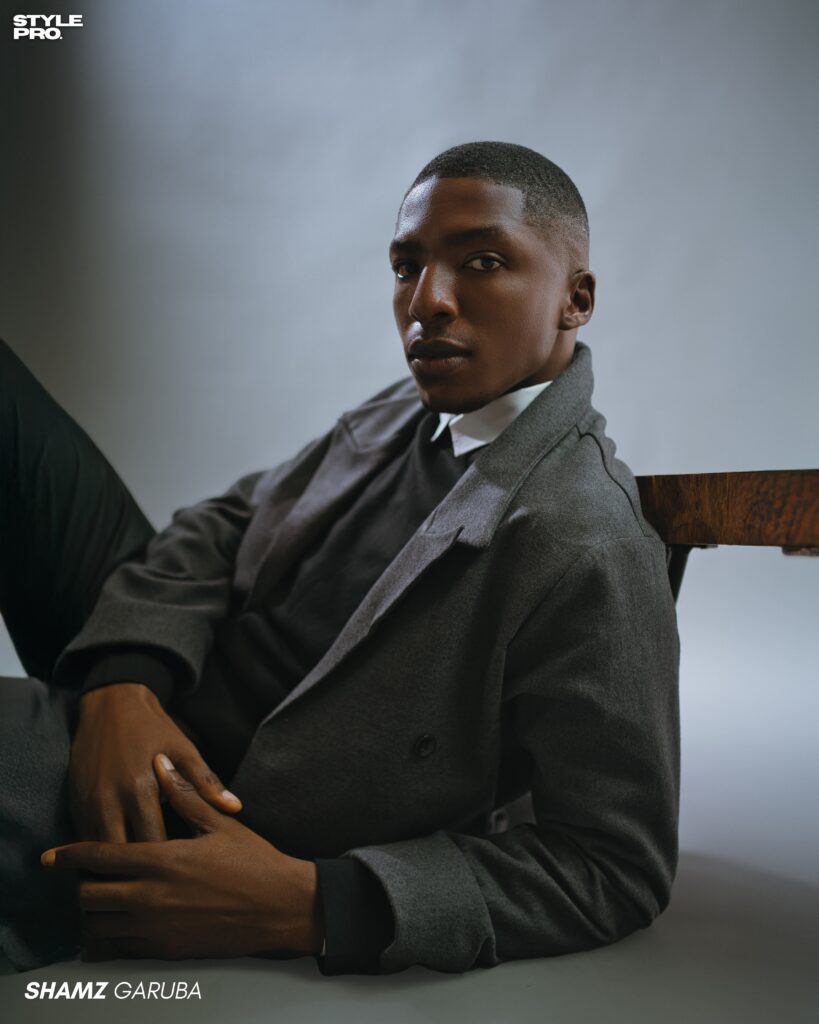
Together, they sketch three versions of presence: quiet, commanding, and human. It’s a reminder that identity isn’t one-dimensional, it’s layered, performed, and constantly evolving.
THE INHERITANCE OF IMAGE
In HBO’s Succession, power shifts through boardroom deals, family wars, and the constant calculation of legacy. In African fashion and culture, succession plays out differently. The thrones aren’t oil empires or media conglomerates; they’re stages, runways, and feeds where image is currency.

African creatives are no longer asking for a seat at the table. They’re building new tables. From global brands borrowing African silhouettes to local designers rewriting luxury codes; Image is now export, and identity is brand.
That’s the inheritance Gilchrist, Nonso, and Shamz step into. They don’t just wear clothes; they extend history. They don’t just model; they direct narrative. The story of African style is no longer written by outsiders. It’s owned by those who live it, bleed it, and reshape it daily.
Nonso puts it plainly: “The story behind the garment matters more than just who’s wearing it.” In a world of fleeting trends, story is permanence.
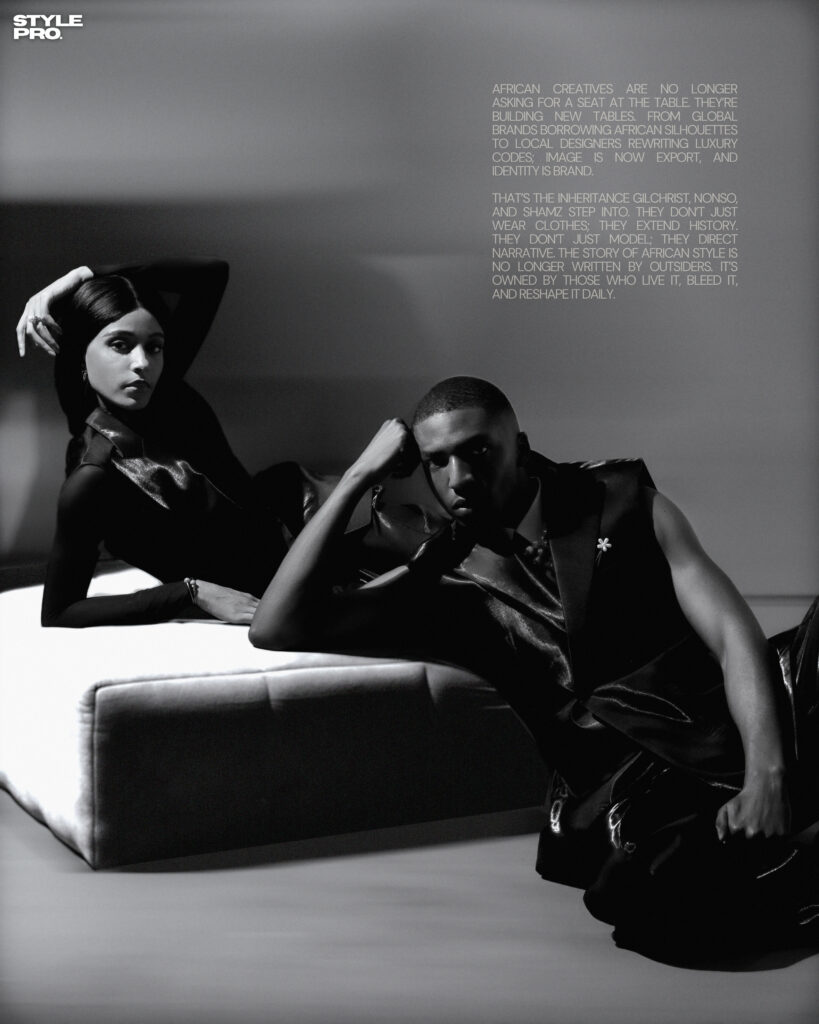
THE BUILDING STAGE
If you ask Shamz where he is in his journey, he doesn’t give you vague ambition. He paints a building. “I’ll say I’m still constructing the foundation,” he reflects. “Still trying to make it stronger with quality materials so that the building lasts a lifetime.”
That’s his measure of success – not quick fame, but durability. His craft moves between modeling, acting, music, and creative ideas, but all of it builds toward something lasting.
Vulnerability, for him, isn’t exposure of skin but exposure of emotion. Playing a role means opening yourself up, letting people in. It’s riskier than fashion, but more rewarding.
Nonso sees her foundation differently. She started young, walking prestigious runways, modeling for Nigeria’s biggest brands. Her building materials are moments where she brought her own styling, her own energy, her own authorship into images. She doesn’t just wear fashion she bends it to reflect her vision. That’s the kind of foundation that makes a model unforgettable.
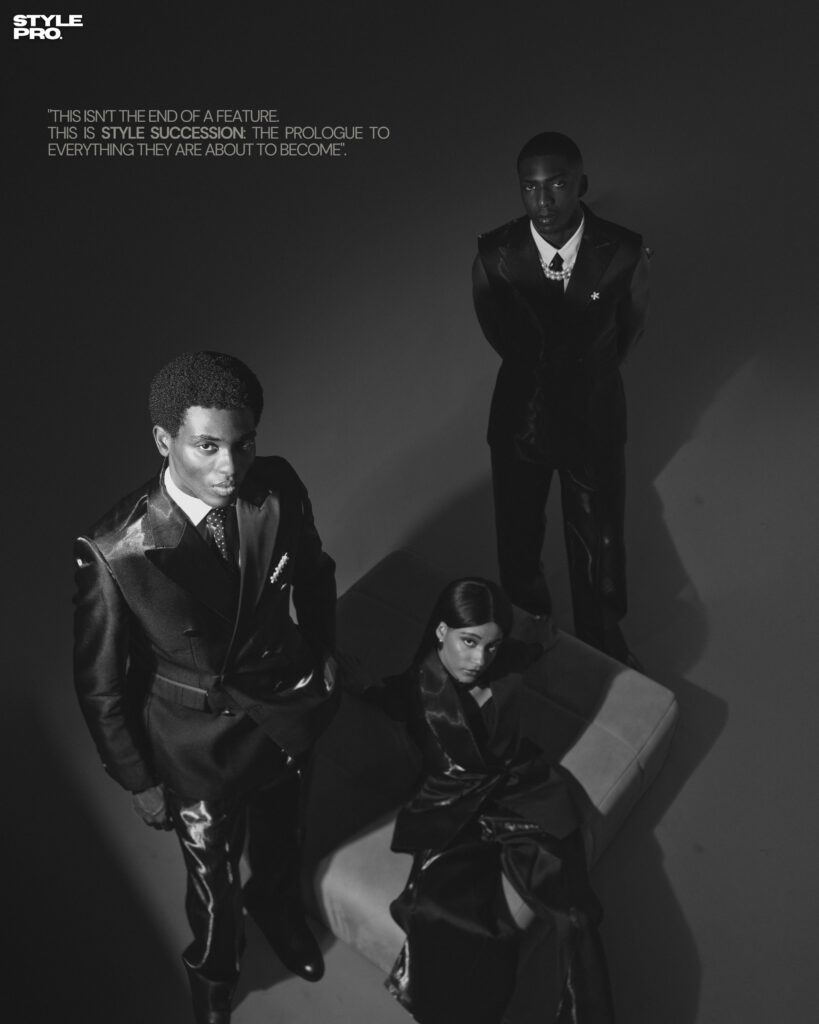
Nonso’s presence is all her own. She doesn’t just wear the clothes; she shapes the story around them. Even her makeup, which she handled herself on set, felt like an extension of that independence.
Gilchrist, meanwhile, describes his career as “the scene where the story widens.” Foundation is laid. Now the setting expands. He still models, but writing, directing, acting are entering the frame. The building is multi-storey, and he’s climbing floor by floor.
Three careers, three blueprints. None of them rushed. All of them deliberate.
THE SHARED THREAD
Despite their differences, their philosophies converge. Each understands that fashion and art are more than surfaces. Presence is a language. A garment carries memory. A role requires vulnerability.
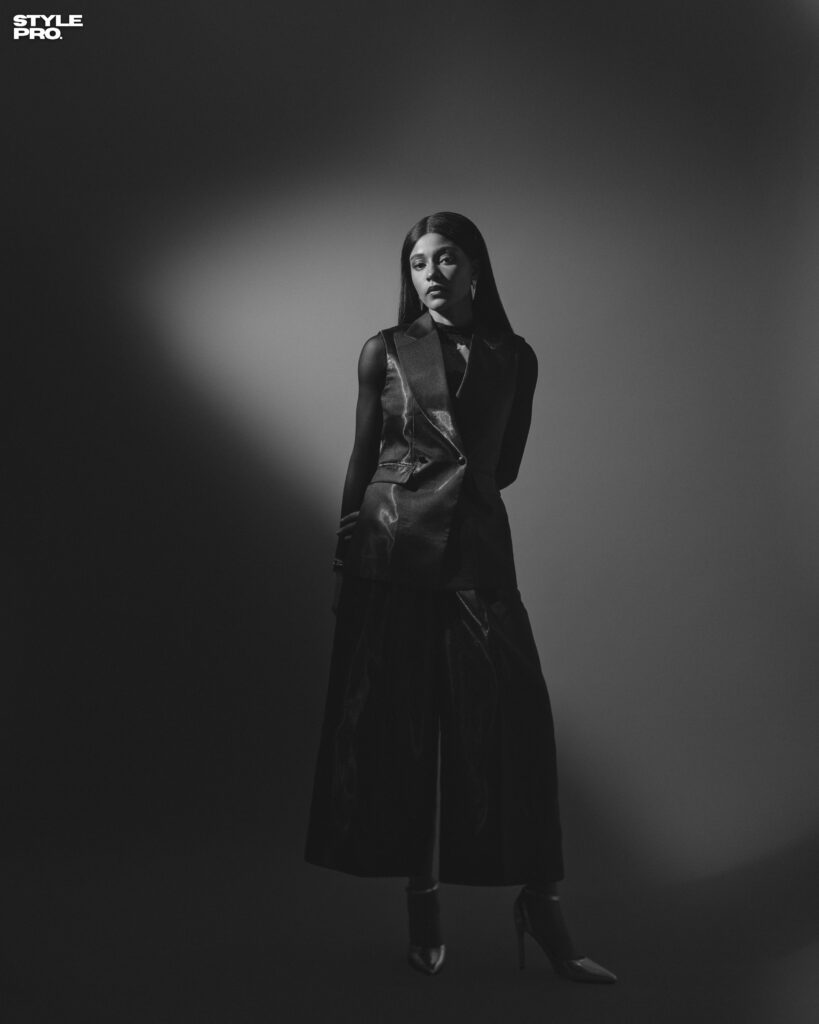
Gilchrist’s silence, Nonso’s aura, Shamz’s openness; they all challenge the same assumption: that African talent must be loud, flashy, or constantly online to matter. Instead, they prove that depth, thought, and presence can be just as commanding.
They are proof that succession isn’t always dramatic. Sometimes it’s quiet. Sometimes it’s gradual. Sometimes it’s three creatives building on parallel paths until their impact is undeniable.
THE CULTURAL TAKEOVER
The question isn’t if African fashion and creativity will dominate globally, it’s already happening. The real question is who will lead the charge, whose images and stories will define the moment.
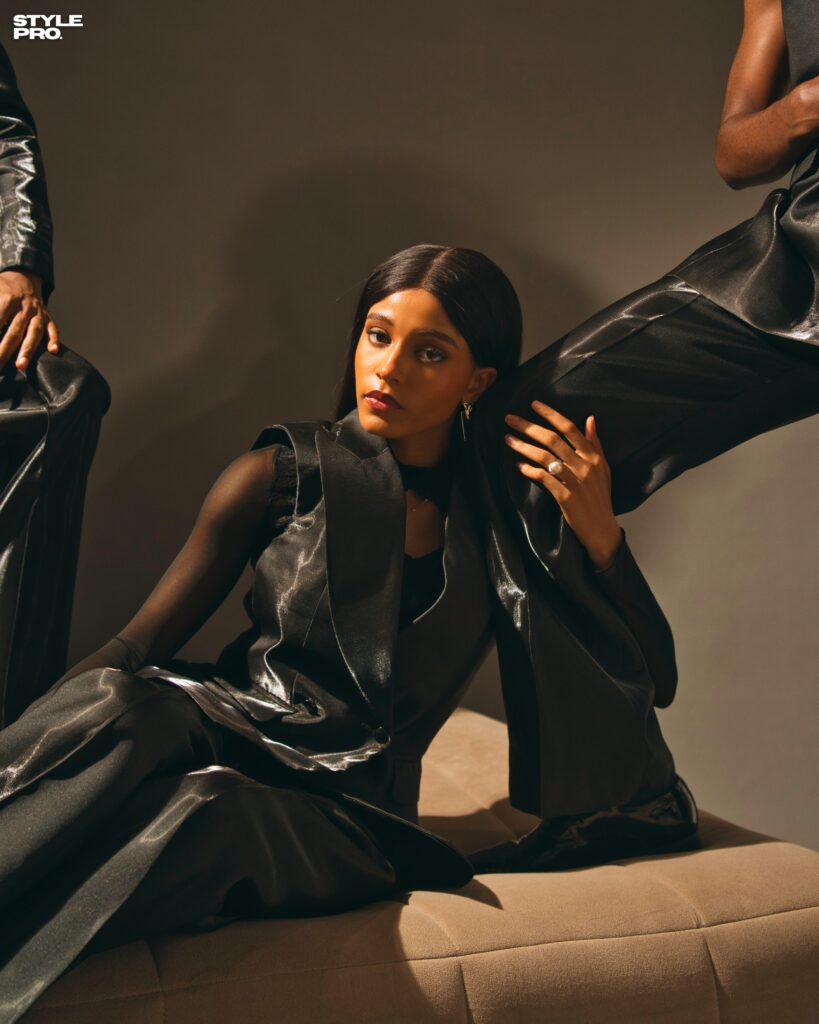
That’s what succession means here: not just who takes over after the old guard, but who expands the story for generations to come.
For Gilchrist, it’s about presence beyond words. For Nonso, it’s authorship of narrative. For Shamz, it’s the foundation of vulnerability and craft.
Together, they represent a shift. They are not just models or actors. They are symbols of an Africa shaping itself, styling itself, and branding itself on its own terms.
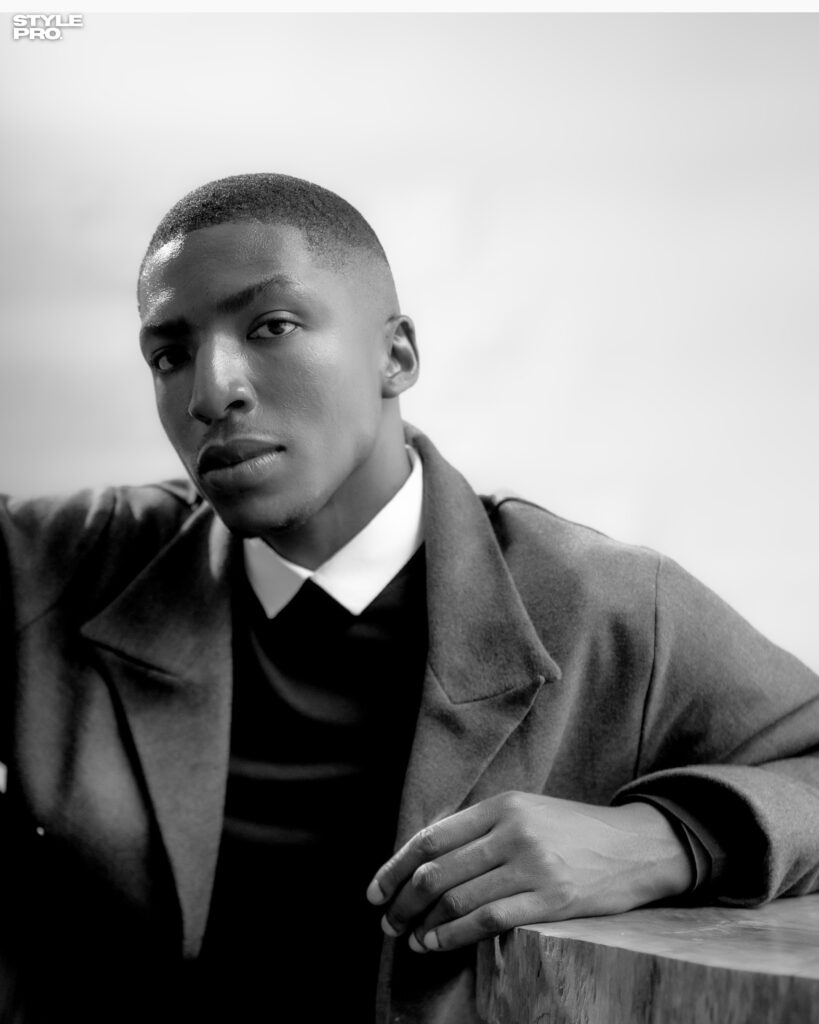
BEYOND THE FRAME
When the lights dim and cameras stop flashing, nothing about them fades.
Gilchrist’s quiet defiance lingers. Nonso’s commanding elegance resonates. Shamz’s restless artistry echoes.
They aren’t here to be remembered for one season or one show. They are here to redefine what seasons even mean. To prove that style, when fused with story, doesn’t just follow trends, it outlives them.
This isn’t the end of a feature.
This is style succession: the prologue to everything they are about to become.


